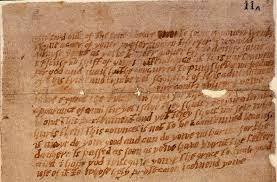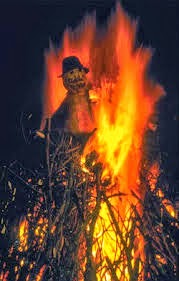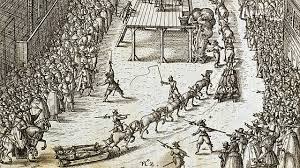James had promised that there would be a greater tolerance and true to his word, after his coronation in 1603, he kept his promise and restrictions on Catholicism were lifted. Almost immediately after the changes took place the king had pressure placed on him by many of the Protestant faith and he soon performed a u-turn.
Angered by this, a group of men, headed by Robert Catesby, a descendant of Sir William Catesby, royal councillor and loyal friend of Richard III, plotted to blow up parliament and the king. These eight men rented a cellar below the Palace of Westminster and filled it with gunpowder, ready for the state opening of parliament on the fifth. They had previously approached Guy Fawkes who was "a man highly skilled in matters of war" and therefore an 'expert' with explosives.' The plotters plan ran smoothly, but they knew nothing of what has come to be known as the Monteagle Letter, it was this small note that was their undoing.
Fawkes was arrested and through torture gave the names of his fellow conspirators. These men whereabouts were discovered, two of the men had fled, one gave himself up but the rest, including Catesby stood their ground against the kings forces at Holbeche House in Staffordshire.
The trial of eight of the plotters began this day the 27th January 1606.










 RSS Feed
RSS Feed
